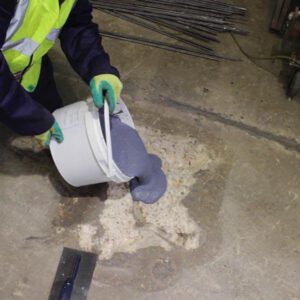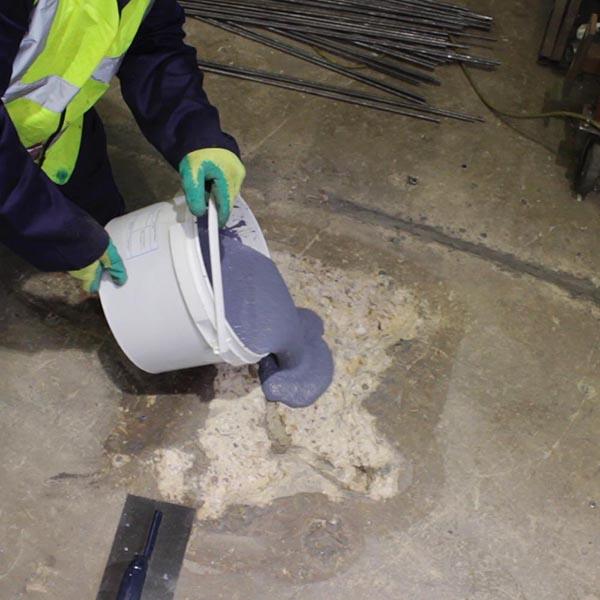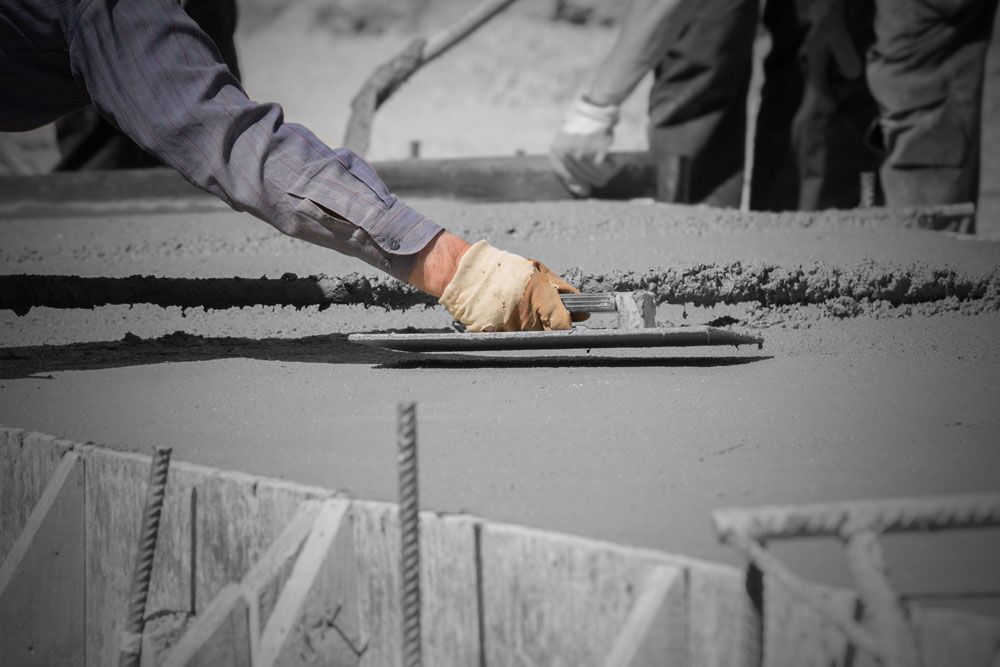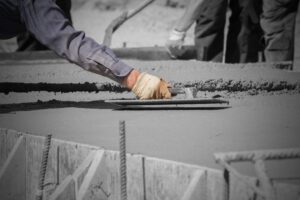While most concrete cracks are easy to repair, others may require a professional. For example, large cracks or ones that compromise the integrity of walls and floors require a licensed contractor.
One of the most common concrete repair tasks is filling in cracks. Contractors should consider the type of cracking as well as its causes before deciding on the right method to use for each job. For example, epoxy injections may help stabilize a crack, but they aren’t a permanent solution and do not address the underlying cause of the cracking. If you need some helping hands, you can call Concrete Contractor Colorado Springs.
In this situation, contractors should look into solutions such as concrete leveling or other structural repair methods that can correct the underlying problem and prevent future cracking. Regardless of the specific method, proper preparation is the key to success. Contractors should take steps to ensure the repair material will bond and last, such as by conducting a pull test or mock-up of the area with the intended repairs.
Before the actual repair begins, contractors should clean the crack area to remove any loose debris that could prevent the filler or patch mix from adhering. Any dirt, oil, or paint must be removed, as they will interfere with the integrity of the repair and could break apart or wash away with water runoff. It’s important to also make sure the crack is dry and clean so that the new materials will adhere properly.
Once the crack is cleaned, contractors should chisel the edges of the crack to create a backward angle, which will mechanically lock the new concrete in place. This can also prevent the crack from reopening or widening as it sets. Then, they should clean the crack of any sand, gravel, or other materials that may have fallen into it. This will allow the crack to close tightly against the new concrete and reduce moisture infiltration that could cause further damage.
Once the crack is prepared, contractors should apply a suitable crack repair product, such as a polyurethane sealant or concrete repair mortar. These products offer better performance and durability compared to latex-based options, as they are not affected by humidity or cold weather. Typically, they can be used for cracks up to 3/8 inch deep and 1/2 inch wide. For larger repairs, contractors can use crack stitching. Stitching uses U-shaped metal bars of varying lengths, which are inserted into the crack and then filled with grout to form a “key.” This helps to distribute the tension across the entire crack and prevent it from further movement.
Repairing sunken areas
Concrete is very durable, but it does have a “shelf life.” After a while, the concrete in commercial and industrial facilities will begin to sink or settle. This can be very costly and may impact the integrity of the structure.
Fortunately, there are several methods to fix this problem. A professional contractor can evaluate the situation to determine what approach is best for your facility. There are three main repair options:
Conventional placement of new concrete
This method is a good choice when the damage is limited to only one or two areas of a slab. It can also be used to repair sections of honeycombing in concrete walls. This method requires careful preparation to make sure the new concrete will bond to the existing structure. Typically, a low water-to-cement ratio and a high percentage of coarse aggregate are required.
Chemical admixtures can be added to the concrete mix to reduce corrosion and help it resist cracking. It is important to use a quality bagged concrete mix for the best results, especially when repairing old concrete. Many hardware stores sell liquid chemical additives that can be added to the concrete. These additives can be helpful, but they should not replace careful preparation of the base and careful execution of the repair work.
Once the repair area has been prepared, it should be thoroughly cleaned and swept to remove any loose dirt or debris. It should then be primed with neatly blended epoxy immediately prior to placing the concrete mixture. It is important to have the epoxy completely absorbed into the concrete surface. This will ensure a good bond with the concrete and prevent chloride ingress into the repaired area.
Once the epoxy has cured, the concrete mixture can be placed and tamped. The new concrete must be placed and consolidated to eliminate essentially all voids at the interface with the existing concrete. It is important to tamp the repair material hard enough to produce full density and to minimize shrinkage and cracking. It is also important to have the concrete material have sufficient flexural strength, abrasion resistance, and durability.
Repairing delaminated areas
Concrete contractors have to keep a variety of tools on hand for repairing delaminated areas. These might include a hammer, spray paint, and a tape measure. They also need to bring a hose or pressure washer to get the concrete surface clean. A wire brush can help with cleaning and allow the repair material to better bond with the concrete surface. The repairing contractor should have access to a paddle mixer so they can mix the repair materials. A caulk gun might be needed for certain repairs or if the concrete damage is extensive.
In the case of a concrete slab that has experienced delamination, it is important to identify the problem and address it before it worsens. This will reduce the risk of additional delamination and extend the life of the concrete structure. Delamination can be caused by water penetration, chemical attack, or structural overloading. It may also be the result of poor construction or construction errors.
Choosing the best concrete repair material for delaminated areas is vital. It should be able to adhere to the damaged concrete and be compatible with any other materials that will be used in the repair project. The contractor should consider the intended purpose for the concrete repair and choose a material that will have an appropriate bond strength, flexural strength, and compressive strength. A quick-setting, non-shrink mortar is usually the most suitable choice for most repairs. Polymer concrete is another repair material that can be used in concrete repair.
A thorough inspection of the concrete can help identify the delaminated areas and determine the cause. If the delamination is due to steel rebar corrosion, sandblasting and patching will be necessary. In the event that delamination is caused by concrete shrinkage, a concrete repair technique known as epoxy injection can be used to bond the repaired area with the rest of the slab.
The repairing contractor should always make sure that the concrete is saturated surface dry (SSD) before beginning any work. Any water on the surface will cause a weak bond between the repair material and the concrete surface. The contractor should also avoid using any de-icing salts on the concrete during or after construction because these can damage the surface and lead to future delamination.
Repairing Slabs
Concrete slabs play a large role in the residential landscape, from building foundations to driveways and outdoor patios. When properly laid and cured, they are strong enough to endure years of heavy use. However, like all materials, they can wear out over time. Some signs of damage are easy to miss, such as cracks and sunken areas. Others, such as sagging and upheaval, are more obvious and can indicate more serious issues. If a homeowner sees any of these signs, it’s important to take action.
Concrete is made from cement and aggregate, a mixture that is hardened in water. The aggregate provides the structural support for the concrete. The cement also creates a chemical reaction that sets the concrete. The chemical process generates a lot of heat, which is why concrete cracks. This is why engineers add control joints during construction to limit the areas that are likely to crack. Slabs that are used frequently, like driveways and patios, experience more cracking than those that are rarely used, such as building foundations.
Slabs can sink due to soil that wasn’t compacted sufficiently during construction, and the weight of the slab can cause it to sink. This is typically a more serious issue than cracks, as it can compromise the structure of the home or slab. A sunken slab also poses a trip hazard, and trips are among the leading causes of homeowners’ insurance claims.
A concrete repair contractor can help level a sunken slab. Traditionally, this was done with mudjacking, which involved drilling holes in the concrete and mixing soil into it. Mudjacking was messy and chaotic and didn’t address the root cause of the problem, which was soil that wasn’t compacted properly. Today, most contractors use a process called PolyLevel to inject a polyurethane foam under the concrete that lifts it back to its original position. PolyLevel is quick, noninvasive, aesthetically pleasing, and doesn’t retain moisture.
In many cases, repairing a cracked or damaged concrete slab is simply a matter of resurfacing it. This can be as simple as applying a thick coating of concrete epoxy, or it may require a more extensive repair with carbon fiber reinforcement products. These can add tensile strength across the crack and strengthen the entire slab, preventing it from moving again in the future.



 Look for certifications and industry associations. If your concrete contractor has membership with an organization, that is a good sign. Also, look at the experience of each concrete contractor. Experience builds industry knowledge and skills. If a company has many employees, this is an additional sign of quality and reliability. Good concrete contractors have a high level of productivity, and this is one of the key factors that make their business successful.
Look for certifications and industry associations. If your concrete contractor has membership with an organization, that is a good sign. Also, look at the experience of each concrete contractor. Experience builds industry knowledge and skills. If a company has many employees, this is an additional sign of quality and reliability. Good concrete contractors have a high level of productivity, and this is one of the key factors that make their business successful.